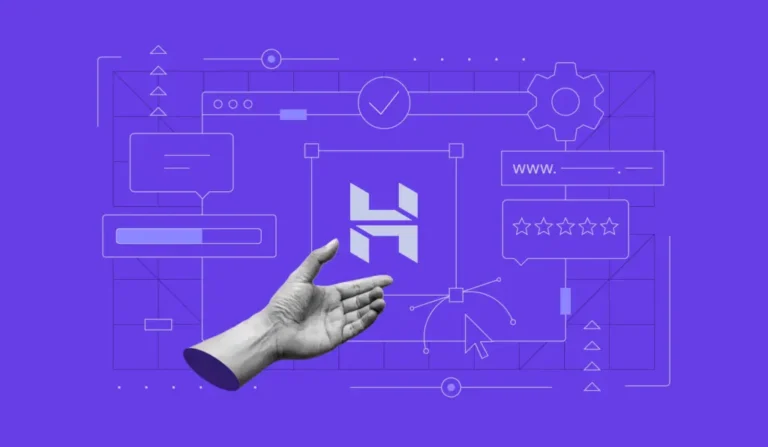Understand Your Users: Crafting Website Copy That Speaks Directly to Them
July 17, 2025 | By Alex White

As a service-based business owner, your website isn’t just an online presence; it’s your most powerful sales tool. But if your website copy sounds generic or talks at your audience instead of to them, you’re missing out on vital connections and potential clients. The secret to crafting website copy that speaks directly to users isn’t just about good grammar or clever slogans; it’s about deeply understanding your users their unspoken needs, their pressing problems, and even the exact language they use to describe their world.
In the bustling digital landscape, generic copy gets lost. Writing user-focused website content is paramount for service businesses, where trust and connection drive conversions. Let’s dive into how you can make your website copy resonate, engage, and ultimately convert.
Why Understanding Your Users Is the Foundation of Great Copy
Imagine walking into a room full of strangers and shouting your service offerings. Now, imagine walking up to one person, looking them in the eye, and saying, “I know you’re struggling with X, and I’ve helped people just like you achieve Y.” Which approach do you think gets a better response?
Your website copy is no different. Generic, self-centered copy that simply lists features fails because it doesn’t acknowledge the reader’s journey. People visit your site looking for solutions to their problems, not just information about your services. When your copy directly addresses their pain points, speaks to their aspirations, and uses language they understand, it creates an immediate, empathetic connection. This customer-first website copy builds trust, establishes authority, and makes your services feel like the perfect fit. Without this foundation, even the most beautifully designed site will struggle to generate leads.
How to Identify and Segment Your Audience
Before you write a single word, you need to know who you’re writing for. This involves moving beyond assumptions to concrete insights about your target audience.
Effective audience-centric messaging begins with robust research and segmentation.
Here are practical steps to identify and segment your audience:
- Create Detailed Buyer Personas: Go beyond demographics. Develop fictional (but data-driven) profiles of your ideal clients. What are their job roles? Their daily challenges? Their goals and ambitions? What keeps them up at night? Give them names, backstories, and motivations.
- Conduct Client Interviews: Speak directly to your current and past clients. Ask them about their journey: What problem led them to seek your service? What were their hesitations? What results did they value most?
- Analyze Website Analytics: Tools like Google Analytics can show you who is visiting your site, where they come from, what pages they visit, and how long they stay. This provides quantitative data about their behavior.
- Monitor Social Media and Forums: Pay attention to online conversations in your niche. What questions are people asking? What frustrations are they voicing? Which terms do they use? This gives you raw, unfiltered insights into their language and needs.
- Review Competitor Messaging: How are your competitors talking to their audience? What gaps can you fill? What unique angles can you take? By segmenting your audience into distinct personas, you can then tailor specific sections of your website copy to address the unique needs and motivations of each group, making your messaging far more potent. This comprehensive understanding is the starting point for developing a strong website content strategy.
Crafting Website Copy That Connects Emotionally and Logically
Once you understand your audience, the real art of website copywriting strategies begins. Effective copy doesn’t just inform; it persuades by appealing to both the heart and the head.
- Lead with Empathy: Start by acknowledging your user’s pain point or desire. Show them you understand their struggle. Use phrases like “Are you tired of…?” or “Imagine a world where…” This immediately grabs their attention and creates a bond. This is where empathy-driven copywriting truly shines.
- Focus on Benefits, Not Just Features: Your services have features (e.g., “30-minute consultation,” “SEO audit”). But what’s the benefit to the client? (e.g., “Save hours of frustration,” “Rank higher on Google and get more leads”). People buy solutions and outcomes, not just services.
- Use Clear, Concise Language: Avoid jargon and overly complex sentences. Your copy should be easy to scan and understand, even for someone new to your industry. Clarity trumps cleverness every time.
- Tell a Story (When Appropriate): People remember stories. Brief anecdotes or client success stories can illustrate the value of your services in a memorable way.
- Integrate Logical Arguments and Proof: Once you’ve made an emotional connection, back it up with logic. This includes testimonials, case studies, statistics, and clear explanations of your process. This combination makes your copy that converts truly effective.
Remember, the goal is to guide your user from understanding their problem to seeing your service as the ideal solution, both emotionally and logically.
Using the Voice of Customer (VoC) in Your Copy
This is arguably one of the most powerful copywriting techniques for improving user engagement. Voice of Customer (VoC) refers to the actual words and phrases your customers use to describe their experiences, problems, and desires. When you integrate VoC into your website copy, you’re essentially speaking their language, which instantly builds trust and makes your message resonate deeply.
To do this effectively, you need to actively use user research to write better website copy:
-
Listen Intently in Market Research: Actively seek out and record the exact phrases and words your target audience uses when talking about their pain points. This isn’t about paraphrasing; it’s about capturing the authentic language.
- Where to find it: Client interviews, customer service interactions, online reviews (Google My Business, Yelp, industry-specific sites), social media comments, forums, surveys, and even competitor reviews.
- Example: If clients repeatedly say, “My old provider left me in the dark,” you know “transparency” and “clear communication” are not just features, but direct solutions to their stated pain point.
- Transcribe and Analyze: Collect these phrases. Look for recurring themes, common frustrations, and aspirations. Pay attention to the specific adjectives, verbs, and metaphors they use.
-
Weave Their Words Into Your Copy: Take these exact phrases and strategically place them throughout your website.
- Headlines: “Tired of feeling [their exact pain point]?”
- Benefit Statements: “We help you finally achieve [their exact desired outcome].”
- FAQs: Address questions using their phrasing.
- Testimonials: Highlight testimonials that use powerful VoC phrases.
By understanding user intent in content creation and mirroring their language, you signal to visitors that you truly understand their world, their challenges, and their needs, forging an immediate connection that generic marketing copy simply cannot achieve. This is the essence of tailoring web copy to audience needs.
Common Mistakes in Website Copy (And How to Avoid Them)
Even with the best intentions, service-based business owners often fall prey to common copywriting pitfalls. Being aware of these can help you sidestep them:
- Mistake 1: Focusing on “We” Instead of “You.”
- Avoid: “We offer top-tier consulting services…”
- Instead: “Are you looking for top-tier guidance to solve your X problem?”
- Why: Users care about their problems and their solutions, not your company’s internal narrative.
- Mistake 2: Using Jargon and Industry Buzzwords.
- Avoid: “Our proprietary synergistic solutions optimize vertical integration.”
- Instead: “We help you streamline your operations so you can focus on growth.”
- Why: Jargon alienates your audience and makes your services seem inaccessible. Speak plainly.
- Mistake 3: Lack of Clear Call-to-Action (CTA).
- Avoid: Ending a page with no clear next step.
- Instead: “Book Your Free Strategy Session,” “Download Our Guide,” “Get a Custom Quote.”
- Why: Users need to be guided. Tell them exactly what you want them to do next.
- Mistake 4: Not Addressing Objections.
- Avoid: Pretending potential client hesitations don’t exist.
- Instead: “Worried about the cost? We offer flexible packages tailored to your budget.” (If applicable).
- Why: Proactively addressing common objections builds trust and removes barriers to conversion.
- Mistake 5: Neglecting Scannability.
- Avoid: Long, dense paragraphs of text.
- Instead: Use short paragraphs, bullet points, bolding, and clear headings.
- Why: Most users scan websites, especially on mobile. Make your key points easy to digest quickly.
Conclusion
Your website copy is more than just words; it’s a direct conversation with your potential clients. By committing to understanding your users at a deep level by researching their challenges, adopting their language, and continuously optimizing your messaging you transition from writing generic text to crafting website copy that speaks directly to them. This isn’t just a best practice; it’s a fundamental shift that empowers your service-based business to build stronger connections, generate higher-quality leads, and achieve sustainable growth.
Start listening to your audience, and watch your website transform into your most effective client-attraction magnet.
Source: https://weboracreative.com/understand-your-users-crafting-website-copy-that-speaks-directly-to-them/


